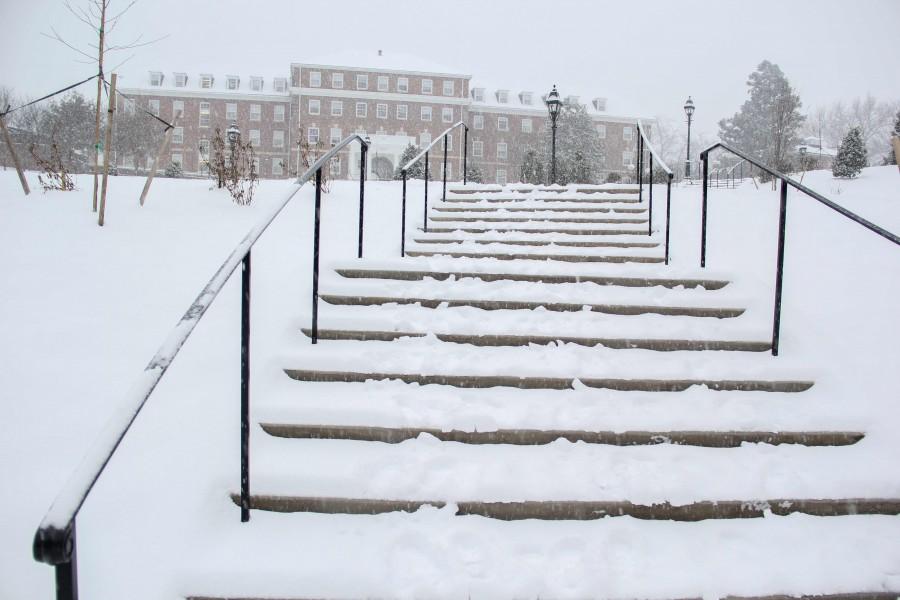Handicapped students struggle to access older buildings
Lack of elevators, handicap accessible classrooms cause students struggle in navigating campus.
January 27, 2016
Constructed in 1749, Washington and Lee was not originally equipped with the technology needed to make the campus handicap accessible. As the school has grown over the past two centuries, students on crutches, in wheelchairs, and with other physical disabilities have been left to struggle to get from one class to the next.
“This campus is one of the most inaccessible places that I’ve been in a long time,” Stephanie Foster, ‘19, said. “They’re working on making some modifications, but it’s slow coming.”
Foster’s father uses a mobility scooter when he visits the university. He has trouble moving around campus due to the lack of ramps and elevators. And the ramps that have been added are often inconvenient and far apart.
“I sort of understand wanting to keep the prestige of a historical landmark,” Foster said. “But at the same time, we want a campus that is accessible for everyone.”
Both first year residence halls, Graham-Lees and Gaines, are now equipped with elevators to make the dorms accessible to disabled or injured students. And all six sorority houses have elevators.
But the Fraternity houses and the Woods Creek Apartments, which typically house sophomores, do not have elevators. While the apartments were renovated in the summer of 1996, no elevators were installed for students on crutches or in wheelchairs.
Sophia Benoit, ’18, needed hip surgery last summer. At the time, she lived in Gaines. But she was forced to wait to schedule her surgery until after the school-year ended.
“When I was going to get my hip surgery, I was going to be on crutches for six weeks,” Benoit said. “I had to wait until school was over because it was impossible for me to get around.”
Benoit had classes in Tucker Hall that semester and knew it would be difficult to make it to the higher floors. Earlier in the year, another student in Benoit’s Spanish Literature class broke her foot, and struggled getting to class.
“We were in Tucker on the fourth floor, and obviously there was no elevator there so she couldn’t get up the stairs,” Benoit said. “So we moved to the first floor of Reid instead.”
Hammad Ahmad, ‘19, is facing similar problems. He’s been using crutches since earlier this winter, when he sprained his ankle.
“I was given crutches [from the Health Center] immediately, and then it was kind of stressful for me,” Ahmad said.
Ahmad was injured on the Friday before exam week. His first final exam was the following day in the Tucker Multimedia Center, but he knew he could not get up the stairs with his sprained ankle. Ahmad emailed Dean of the College Wendy Price to change his exam location, and completed his Arabic final in Baker Hall, with the help of Public Safety.
“When it rains or snows, I just call public safety and they help me,” Ahmad said.
Newcomb Hall on the Colonnade faced restoration in the summer of 2010. The building now includes an elevator, a handicap accessible toilet, and automatic door openers.
Tucker Hall is the last building on the Colonnade scheduled for restoration. The building will include an elevator to improve accessibility for all students, according to wlu.edu.



